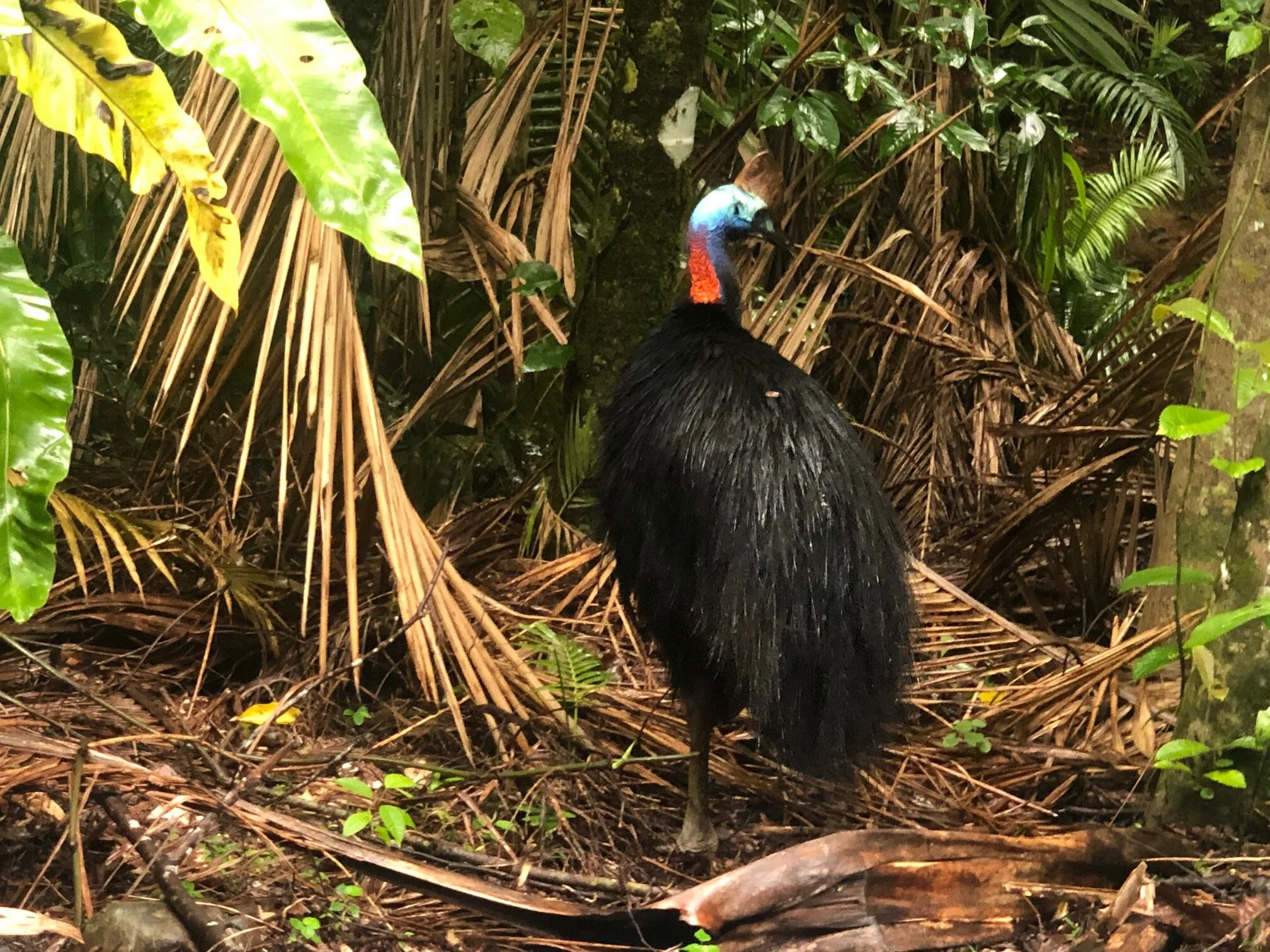As our Davidson plums start to ripen in the orchard at Wildwood, I wonder when we’ll spot another cassowary here at Wildwood.
We’ve been catching almost daily glimpses of these incredible birds in the early mornings around the area - we were lucky enough to spot one out walking a few months back at a nearby creek, as I wrote in this blog. So I’m always hopeful that our guests will get to see one on their visits as they’re such an iconic part of the rainforest.
With less than a month to go until World Cassowary Day, we thought they were worth a closer look!
Cassowaries play a starring role here in the Daintree, helping to scatter seeds throughout the forest (some of them are so big no other animal can swallow them) - according to the Rainforest Trust, cassowaries are considered a keystone species because of their role dispersing the seeds of up to 238 rainforest species of plants and trees. Their unique digestive system means they're the only ones able to digest certain fruits, like the cassowary plum, which has sap that's poisonous to humans and most other creatures.
These huge flightless beauties can stand up to 2m tall and weigh up to 60kg – they have a trio of claws at the end of their muscular legs, reaching up to 12cm long, which they can use like a dagger if they feel threatened.
Though they're considered the world's most dangerous birds, they’re naturally shy and won't seek out trouble, and always choose flight over fight (unless they are cornered or trying to protect young). And they’re not that easy to spot: for such big, colourful birds, they blend remarkably well into rainforest shadows!
Cassowaries can live to the ripe old age of 40; they're mostly loners, only coming together when it's time to mate. Another cool fact is that the fathers incubate the eggs for nearly two months, then raise the chicks for a further nine months and teach them how to forage and fend for themselves.
Sadly, southern cassowary habitat has been seriously reduced by land-clearing for farming and housing development; other threats include getting hit by cars, dog attacks, human interactions, pigs and disease.
The southern cassowary is classed as an endangered species, and scientists estimate that there might be only 1,200 – 1,500 of these birds in Australia. They're certainly becoming a rarer and rarer sight here in Cape Trib so if you are lucky enough to spot one while you’re here, it will be a very special experience indeed.

